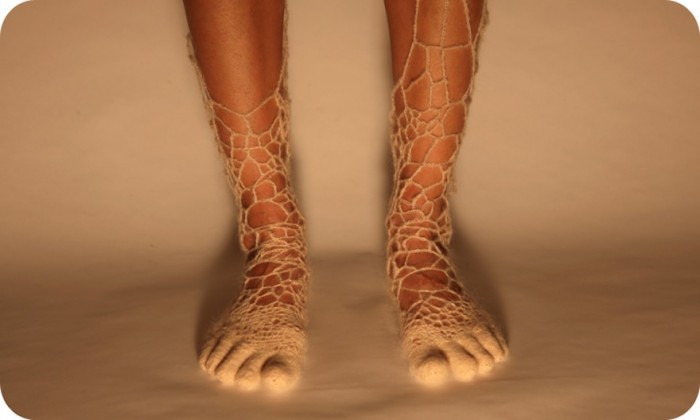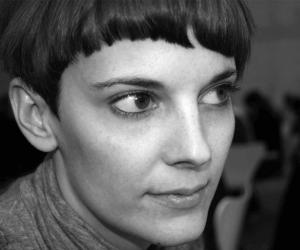
“My work is something that is not exactly defined,” says Sonja Bäumel. The artist and designer’s work engages with the boundaries between fashion design, art, biology and science. In her thought-provoking projects, Bäumel considers plants, animals, fungi and even bacteria as equally important partners in finding solutions to global matters.
After studying fashion design at the Fashion Institute of Vienna, she received her Master's in Conceptual Design in Context from the Design Academy Eindhoven. Bäumel now works between Amsterdam and Vienna.
Here she tells us what she hopes her work will achieve in the future and shares with us the most rewarding and the most frustrating part of being a designer in her field is.
What is your design mission?
My mission lies in understanding how, we, as humans are connected to our surroundings and enveloped within an unknown network. This could perhaps lead us to identify new forms of interaction between our surrounding environment and ourselves. Furthermore, I am interested in what influences scientific knowledge in regards to the way we historically perceived and interpreted the human body. With the objective of transferring such understanding within contemporary time and projecting it further into the future, I strive to unravel how our comprehension of the biological body is affected by our current society and cultural context. I believe the collaboration between art/design and science rooted in artistic research will allow the cultural imagination to merge with technical knowledge and technical methodologies, bringing an awareness of the latest scientific developments to a wider public.
What do you think we have to learn from microorganisms?
From my perspective it is essential to gain a deeper understanding of how microbial interaction functions, in order to learn how to utilise it in the best way possible. Trying to interpret the soundless language spoken by millions of barely perceivable entities living on our skin is an essential step to building a new living, adapting system on our body. This could strongly impact not only the way humans interact, but also particularly the way societal systems and networks work. To be capable of fully integrating with natural life-systems, we firstly need to consider and respect microbes and tiny creatures as equal partners. Such behavioural change could allow us to start learning from them and their expertise, deriving from billions of years of existence.
Sounds like complex work. What motivates you to take it on?
My attitude is: Keep wondering. Keep wandering.
Was there anything you experienced growing up that steered you towards having a career in design?
Observing my surrounding through a microscope.
What was your lucky break?
I stumbled upon a lucky break every time I met inspiring people along my way.
How do you juggle running a successful company with being creative?
I don’t, I’m still trying.
Do you prefer working alone or collaborating? Why?
I prefer to collaborate. It keeps my mind open and allows me to see things from different perspectives, making it possible for initial thoughts to change direction.
Describe your workspace…
I have a movable workspace. Sometimes I work in laboratories and sometimes in a Viennese coffee house. I have one fixed workspace, which I share with three other trans-disciplinary studios. Our workspace is called WNDRLUST (coming from the German Wanderlust – a strong desire for or impulse to explore the world) and it represents a collective desire to explore the space between art, design, science and society. Furthermore, we share our studio with lots of other life forms like bacteria, fungi, plants, fish and wild black cats in our garden.
Which of your fellow designers do you admire?
I admire the artist Giuseppe Penone.
Which of your designs are you most proud of?
All of them and none at the same time.
What excites you most about the way the industry is changing?
Hopefully in the future, it will change even more in terms of respecting all life forms on planet earth and considering them as equal partners.
What is the most rewarding thing about being a designer?
The most rewarding moment is when somebody tells you with an open heart that he/she is inspired by what you do.
And the most frustrating?
The necessity to deal with linear systems.
Is there a design object you use everyday that you would like to redesign?
It's not an object, but a system. I would like to re-structure the system of clothing, namely “fashion”, from scratch.
What are you most passionate about in your down-time?
Gardening.
Do designers ever retire?
Passion never stops.
What are you currently working on?
Refashioning the microbial body.







